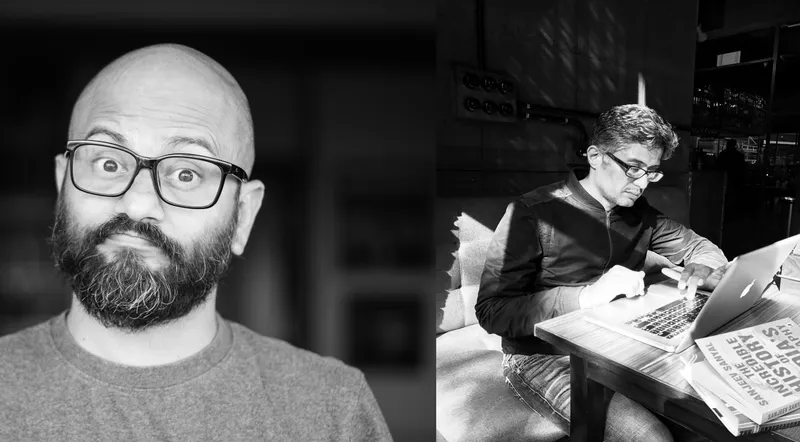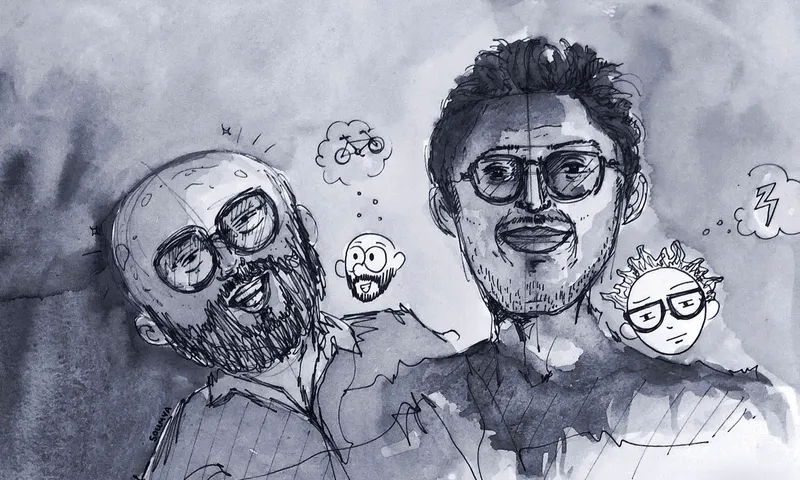

Recreating Brand Stories: How Are Design, Strategy And Communication Transforming Brands?
Amalgamating the said aspects, Think Simplr has created multiple brand experiences and engagements.
A strong brand gets recognized and establishes its value quickly for being pragmatic. To emphasize, not only does it help swerve damage from industry events but also enables you to better leverage your strengths.
Ideating, strategizing, and designing such a kind of brand experience and concept is the first step. There are several elements associated with a brand to follow. And, so it does not get created or transformed overnight. The process can be time-consuming from implementing every idea to closing all the gaps. Therefore, to creatively focus on such big, critical impact points, a strategic creative agency comes into the picture.
In reality, their work goes far beyond creating pretty pictures, designing logos or interpreting client strategies. It requires a delicate balance of strategy and creativity to uncover what's truly unique about a brand.
In this advent, there exists a strategic creative agency, Think Simplr that helps brands uncover gaps or challenges that can interfere with reaching their organizations' goals. Founded by two brilliant intellectuals, Raman Kalia and Sudip Bhattacharya, the agency showcases the amalgamation of effortless creativity and strategizing. Think Simplr has created multiple successful brand experiences and brand engagements.
Their point of difference being their way of minimizing the gaps in their client’s lives, Raman and Sudip had some insights to share about their journey! Let’s take a look!
DJ: What prompted you to begin with Think Simplr?
Raman Kalia (RK): As the name suggests - at some point, we realized there is a substantial gap in the client's life for a strategic creative partner. Somebody who breaks down a seemingly complex problem into its subparts, identifies what matters and influences the challenge most and comes up with simple, meaningful solutions. Often ideas, solutions, presentations and designs are driven by the creator's ego and not the purpose, inspired by convoluted thinking that profound & dense is impressive.
Sudip Bhattacharya (SB): We prefer being purpose-driven. This approach may not work with every client, but the ones with similar philosophies find us relevant and partner with us. 'Think Simplr' name is just an extension of our way of working. Before we meet people, they would have formed an opinion about us, and the expectations are also apparent in their mind.

Sudip Bhattacharya And Raman Kalia - Co-Founders, Think Simplr
DJ: What was the thought behind naming your startup - Think Simplr without an 'e'?
RK: A compelling ask, why the missing e? To be honest, it's just a symbol of our philosophy - simplifying things. Simplr or Simpler sound precisely the same, making 'e' unnecessary. Also, 'Simpler' is difficult to register as a brand name. So, we solved our problem our way.
DJ: Could we say that Think Simplr is a creative agency that provides 360-degree brand solutions? What differentiates you from other agencies?
SB: We won't prefer calling ourselves a creative agency only. We are the right mix of strategy leading to creatives. Neither would we want to be branded as a 360-degree agency, all that sounds too fancy and big.
RK: We are a lean company and try to look at solving problems. Our tools are strategy, design and communication. We come from a solution mindset, and that makes us a medium agnostic agency.
DJ: How is Think Simplr creating the differentiating factor that transforms brands?
SB: That's very simple! Just shift your focus from your success to the brand's success and don't look at the client as someone sitting across the table. Instead, view the table as a place where a bunch of stakeholders are sitting and solving problems. The collaborative is an often parried word but rarely exercised truth. For us, that is the only way of working.
RK: For brands to succeed, you need talent and focus committed to the success of the brands. We like to believe that all agencies are talented; the weakness is the focus. The focus gets dispersed for diverse reasons. We never compromise on ours towards our clients business. To paraphrase an old advertising line, we are small, so we have to be better.
DJ: Elaborate on any of the three best brand strategy campaigns that you have carried out.
SB: We genuinely have some fascinating case studies to our name, ranging from F&B to healthcare to real estate. To go in sequential order, one of our first projects was for one of India's largest salon chains - LOOKS. The problem was that while they were the most prominent chain, the customer would identify them as single outlets. We did lots of customer interviews, lost customer interviews, interviews with employees, ex-employees etc. and realized what they need is a singular brand experience. Their outlet to outlet experience was excellent but lacked consistency as a brand on the whole. Our first step was to create a unique brand identity and brand experience for them.
RK: Another favourite project for us was for a leading Pharma company where we had to build a strong relationship between the medical representative and the doctor. Based on one-on-one and telephonic conversations with both the parties, we came up with communication design which helped the representative to have more substantial and in-depth control over his narrative in-front of the doctor, which eventually led to more time with the doctor.
Again for a healthcare company, we re-launched their pediatric range of medicines. It was a complete strategy plus a design assignment. Identifying the ecosystem’s needs, from doctors to parents to the child and then designing an end-to-end solution for it. It led to a unique packaging design approach to engagement in the clinic to go beyond and stay relevant even at the home of the customer. It was an end to end solution with each piece in sync with the other.
DJ: How does branding change a brand's persona? Why should people hire brand experts?
SB: Brands are like humans; they need to have makeovers, makeups and touch ups done depending what impact one wants to have on the customer. They need to continually reinvent themselves to play a meaningful role in a customer's life. Technology brands have redefined this speed of change by constantly offering new and better every year. And, this is not the job of an ad agency, but you need an agency that specializes in branding. Moreover, it's critical for someone to have an overview of each branded piece to make sure they fall in place and together look seamless.
DJ: Please tell us about your respective professional backgrounds and the areas of interest.
RK: I'm an MBA (Marketing) and professionally have had a yo-yo approach. I began my career on the client-side at Rallis ( a TATA company) and then switched to agency-side (FCB/Mudra). And, then back to the client-side (Air Deccan/ UB Group /Bengaluru International Airport). My last job was with the Bengaluru Airport as the Head of Marketing before co-founding Think Simplr.
So, I bring a genuine understanding of the expectation of both sides. At the agency-side and the client-side, I've been fortunate to do innovative work, be it working at Air Deccan India's first low-cost airline and the challenge of fighting the much more significant players with limited marketing budgets. Or being a part of India's first private airport, and changing the perception of the passengers about Indian airports, it has been a fun journey. Plus, at Think Simplr, what we do is exciting, unique and challenging.
At a personal level, I've written a couple of books, a visual book on brands and a humorous picture book on golf. Playing golf, travelling, and reading are my happiness pursuits.

Think Simplr Team: Sudip Bhattacharya And Raman Kalia
SB: An avid traveller, exhibited photographer, food enthusiast, tireless cyclist, creative designer, strategic thinker - these words describe me the best, having walked many roads in my 20 years of marketing & advertising experience. So long, I have lived doing all these all the time and firmly believe that all these coexist. My love for photography, passion for travel and madness for food - add on to my experiences. That makes me a person who loves to be a designer and communicate through design.
DJ: How would you differentiate between branding, advertising and marketing?
RK: For us, branding is an identity and is the responsibility of an organization. Everyone involved with a brand is part of the branding ecosystem, be it manufacturing, finance, marketing, HR, sales, every function owns and embodies the values of the brand.
On the other hand, marketing is an overall customer/market engagement approach. It is about making brands viable, desirable and feasible internally and externally.
SB: Whereas, advertising is a subset of marketing and is a way of communicating / engaging / interacting with the customer to make brands understood, relevant and desirable to the customer. It becomes more comfortable if you start seeing brand-customer interactions as exchanges of information. Then your website, app, your packaging, your stores, people become actors in the larger story. Besides, each trading of information makes the story more significant and more attractive. That's advertising for us.
DJ: How would Raman and Sudip define branding?
Both (In Unison): Branding is an identity. It is a strategy made visible.
DJ: What are the current branding objectives vs traditional branding?
RK: Honestly, I don't think the objective has ever changed since the days; people started putting marks on cattle to show who does it belong to after all. The person whose marks you could see on more numbers of cows or bulls had a stronger hold in society. That was called branding. Not much has still changed. The page with more likes is all the same.
DJ: What is the expected ROI on branding campaigns considering the scenario of nationwide COVID-19 lock-down?
SB: We think it is too early to make any predictions. Covid-19 lockdown is an unprecedented challenge of our age. There are enough and more faux pundits making predictions, we would prefer not to add to that unnecessary clutter.
DJ: How do experience and engagement play deciding roles in new measuring metrics?
RK: With the amount of white noise around us, screaming through hundreds of screens, brands become a blur in our memory. But what we remember is an excellent, meaningful experience and the brands associated with it. According to us, it's the most critical aspect to give an honest experience and to engage with the customer and also know when to give him/her a breather. Don't overdo.
DJ: What type of results are realistic for branding budget and time?
SB: Results are a function of expectations and clarity of thought. They are not a sequential aspect. The metrics of measurement, what defines success, must be agreed upon before the work starts. Results will only tell whether the work has succeeded or failed.
DJ: In your opinion, what are the biggest challenges that currently exist in the advertising industry based on branding and design?
RK: SYNC. We try to have campaigns across channels, but the voice is generally not singular. The advertising, digital engagement, branding and brand experience need to be seamless. There can't be jerks, and we showed our best to make that experience flawless. The promise at the campaign level and delivery at the store or site should be the same.
Sorry folks, the conversation got so impressive that it continued for quite some time. But it is precisely what makes the Think Simplr team stand apart! Their distinctive design and strategic language that brings about real joy in creativity, in ideas, in disruption, in the craft is introducing us to a better world of branding experiences. Lastly, this changing world is rife with opportunity, equality and progress for all of us who are flexible enough to embrace it.







